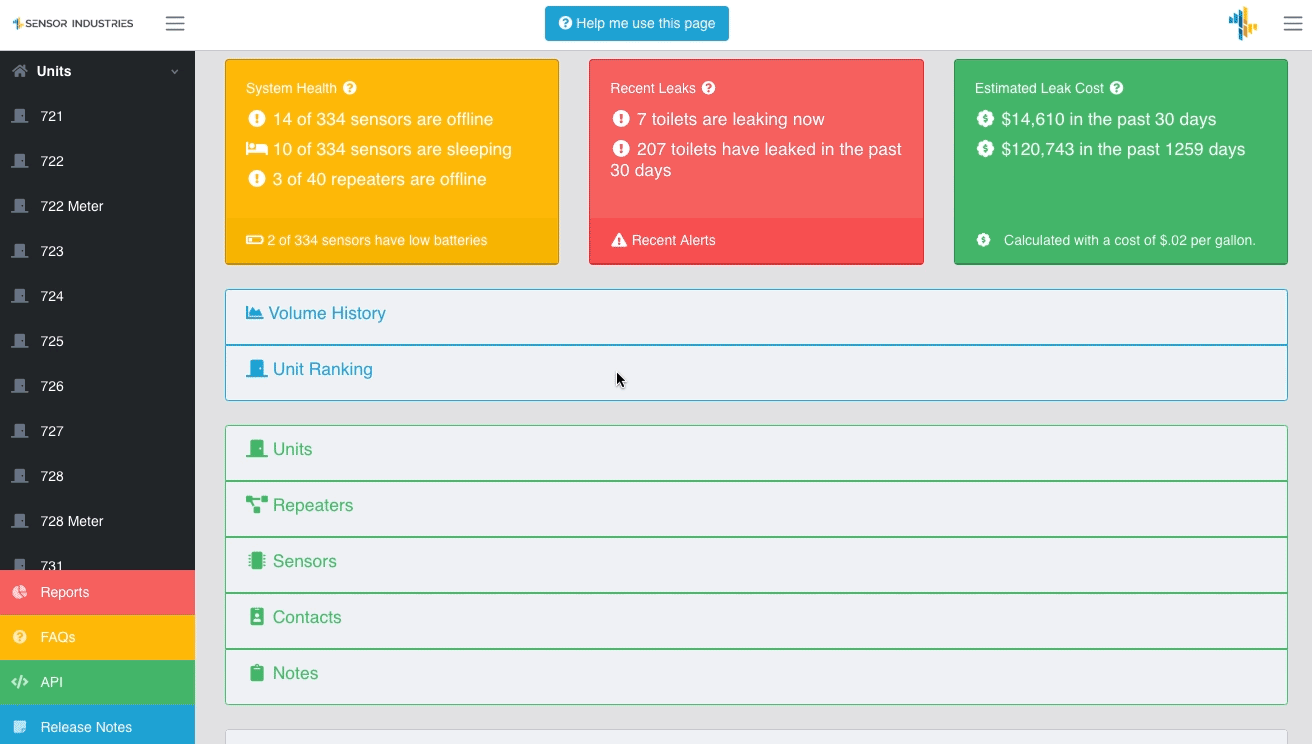Data driven maintenance turns plumbing from a constant source of surprise repairs into a predictable asset. With real time water analytics, operators extend the life of their infrastructure while cutting waste and unplanned costs.
Most plumbing systems fail long before they reach the end of their useful life. Not because the materials are defective, but because maintenance teams are forced to operate reactively. By the time a problem is big enough to notice, damage has already spread, parts have deteriorated, and replacement becomes the only option.
Smart water systems change that equation. With real time data, operators no longer guess where problems start or which assets need attention. They see patterns, failure points, recurring trouble zones, and the true lifecycle cost of every fixture across the portfolio.
The Hidden Cost of Reactive Plumbing Management
Multifamily operators often assume that water waste is a consumption problem. In reality, it is almost always an infrastructure problem. Toilets, valves, and supply lines quietly degrade over time. Without continuous monitoring, these slow failures go unnoticed until the water bill spikes or a resident calls in a complaint.
By that point, the system has already suffered:
- Worn seals and flappers that never fully close
- Repeated stress on fill valves and internal components
- Corrosion and fatigue in supply lines and fittings
- Hidden leaks that weaken floors and walls
- Higher flow rates as fixtures drift from designed performance
These failures shorten system lifespan and push operators toward premature replacement. As issues accumulate across hundreds of fixtures, the cost multiplies quickly.

How Data Reveals the True Condition of Your Plumbing System
With Sensor Industries IoT sensors and the SI Dash analytics platform, operators can pinpoint exactly where degradation is happening long before it affects the building. Instead of waiting for leaks to surface, teams gain a live view into how each building stack behaves.
Data exposes:
- Which toilets leak most often and for how long
- How long leaks persist before they are resolved
- Where recurring failures suggest component fatigue
- Usage trends that predict when assets are likely to fail
- Water use spikes linked to resident behavior
- Slow drips that never generate work orders
Instead of chasing symptoms, engineers receive precise direction. Fix this fixture, replace this valve, upgrade this stack. Over time, fewer issues occur, fewer assets fail, and the overall plumbing system becomes healthier and more predictable.
Extend Asset Life by Replacing Only What Actually Needs Replacing
Traditional maintenance assumes repeated failure means full replacement. Data challenges that assumption. When you can see exactly which fixtures create the most waste, you can invest in the precise upgrades that deliver the biggest impact.
For many operators, ten percent of fixtures generate eighty percent of leak volume. Replacing the right ten percent extends system life far more effectively than blanket retrofits.
Smart water data supports:
- Targeted replacements
- Prioritized retrofits based on leak volume
- More accurate budgeting
- Extended lifecycle for toilets and supply lines
- Fewer emergency truck rolls
- Less structural damage
Why Data Driven Maintenance Is Becoming an Industry Standard
Water is now a direct driver of net operating income. As costs rise and buildings age, the financial pressure increases. Smart building technology is no longer optional. Operators who use plumbing data outperform those working reactively.
Sensor Industries gives operators the visibility they need to stay ahead. With SI Dash, teams can see where problems start, understand system behavior, and act before small leaks become expensive failures.
FAQs
How does data driven maintenance extend plumbing asset life?
Continuous monitoring reveals where leaks start and how fixtures behave over time. Addressing issues early reduces wear on valves, seals, and supply lines, which keeps systems functional longer.
Can SI Dash identify which toilets waste the most water?
Yes. The platform highlights fixtures that drive the greatest leak volume or generate frequent alerts, allowing teams to target repairs where they matter most.
What financial impact can operators expect?
Properties often reduce water spend by thousands per month while preventing costly structural damage. RiverPointe saw a value increase of roughly 1.3 million dollars in the first year.
Does the system require major plumbing changes?
No. Sensor Industries installs on existing plumbing with minimal disruption. Data starts flowing as soon as sensors are activated.
How fast will we see actionable insights?
Clear leak patterns often emerge within days. Gates on Manhattan uncovered major waste within the first month of monitoring and corrected it immediately.
Key takeaways
- Reactive maintenance shortens plumbing system lifespan
- Real time analytics show which fixtures drive waste
- Data guided repairs can increase property value by seven figures
- Smart water insights support better budgeting and longer asset life
- Sensor Industries equips operators with SI Dash to protect NOI
Extend the life of your plumbing infrastructure with real time water intelligence.
Book a Demo
About Sensor Industries: We provide real time water monitoring and analytics for multifamily, student housing, senior living, hospitality, and other multi unit properties, helping teams cut waste, prevent damage, and protect NOI with data driven maintenance.

